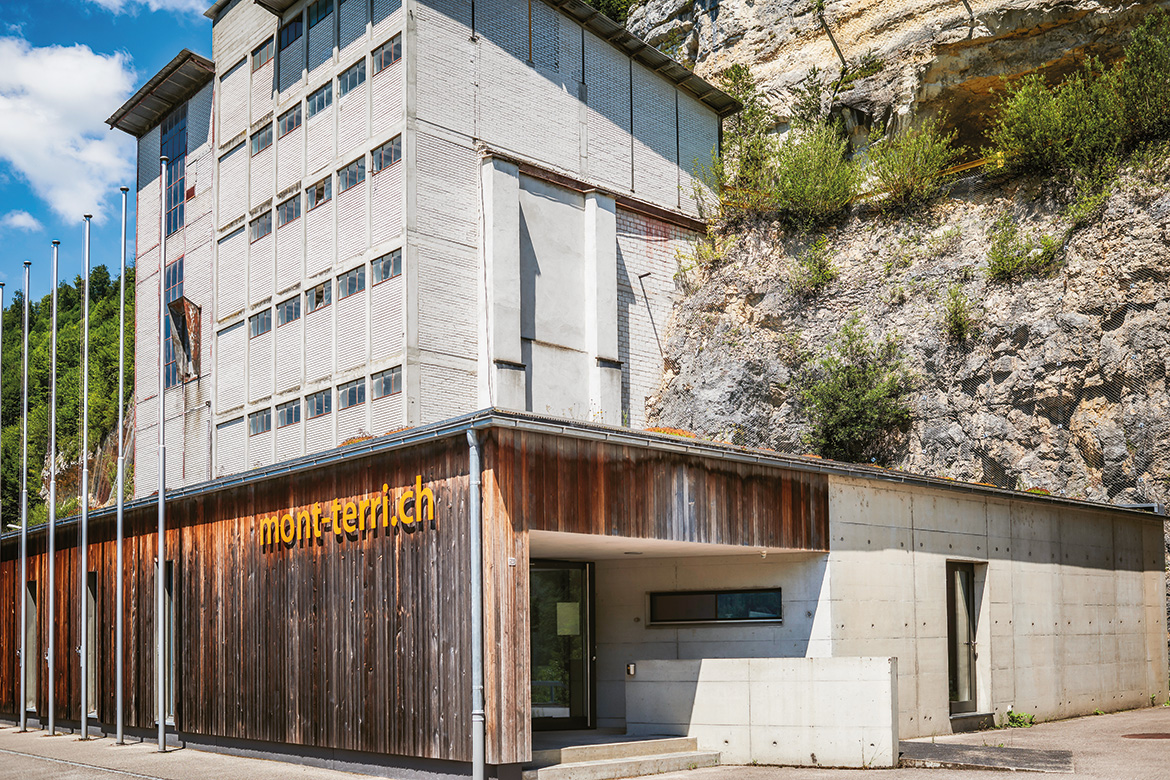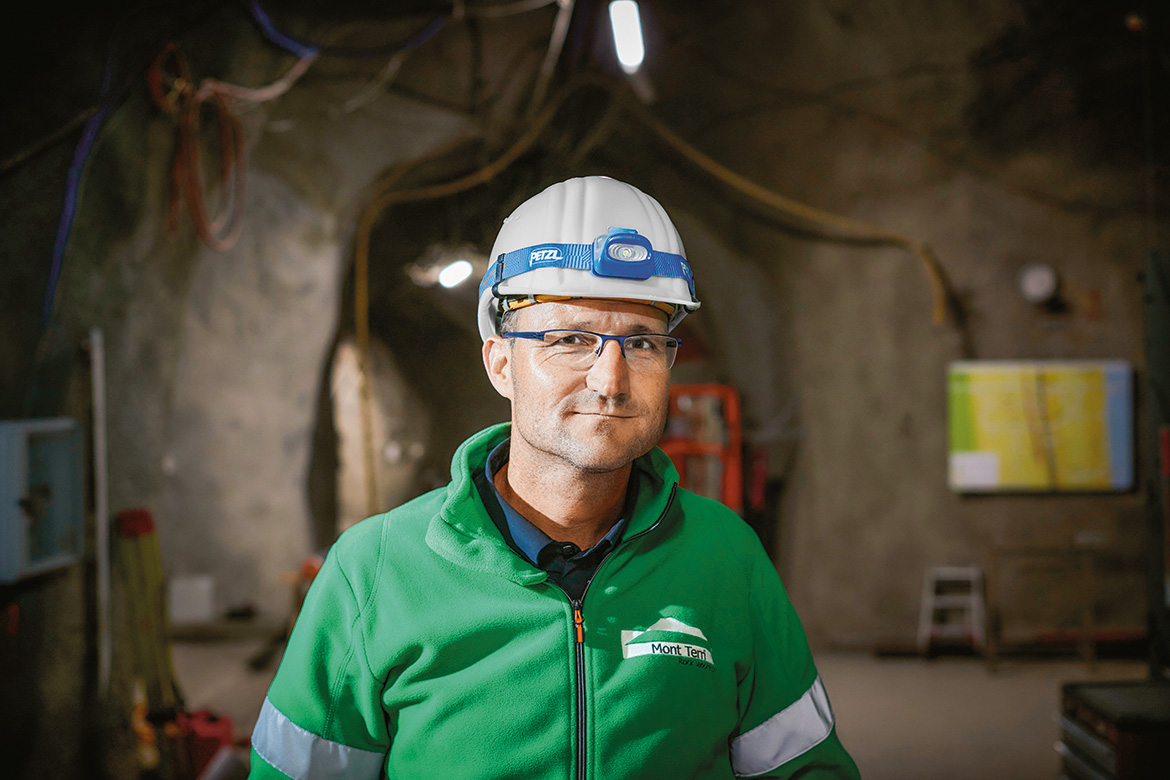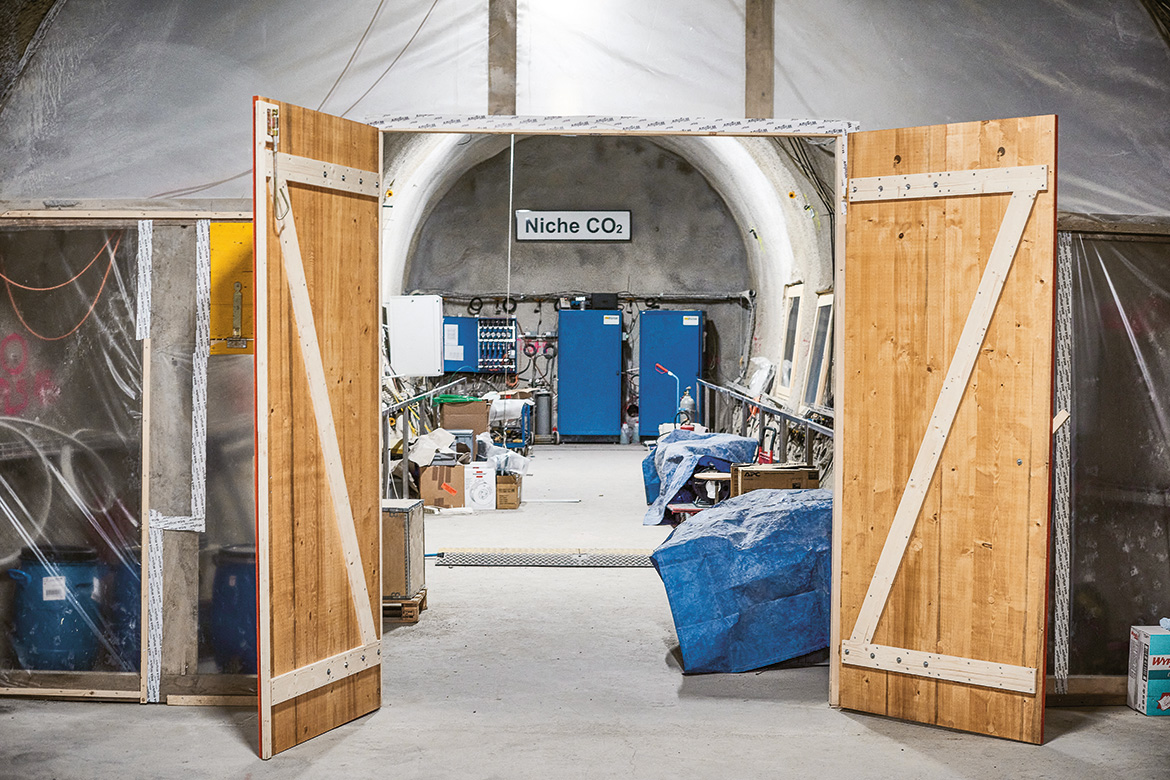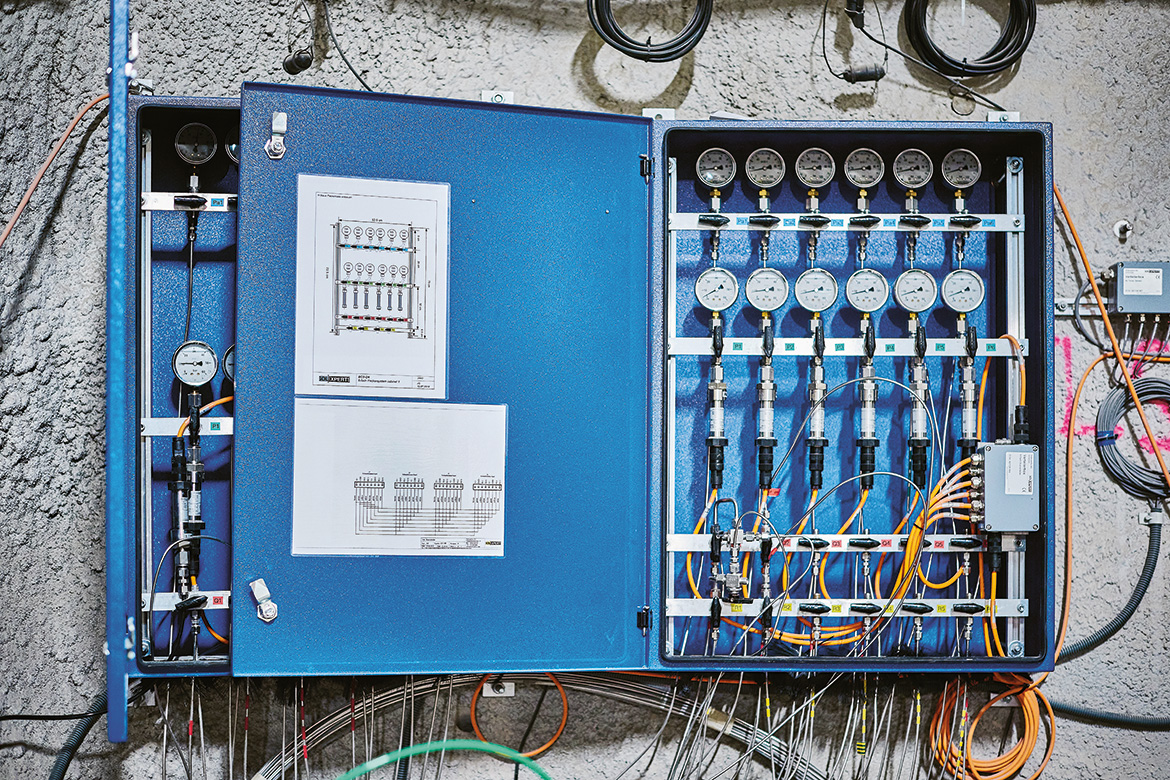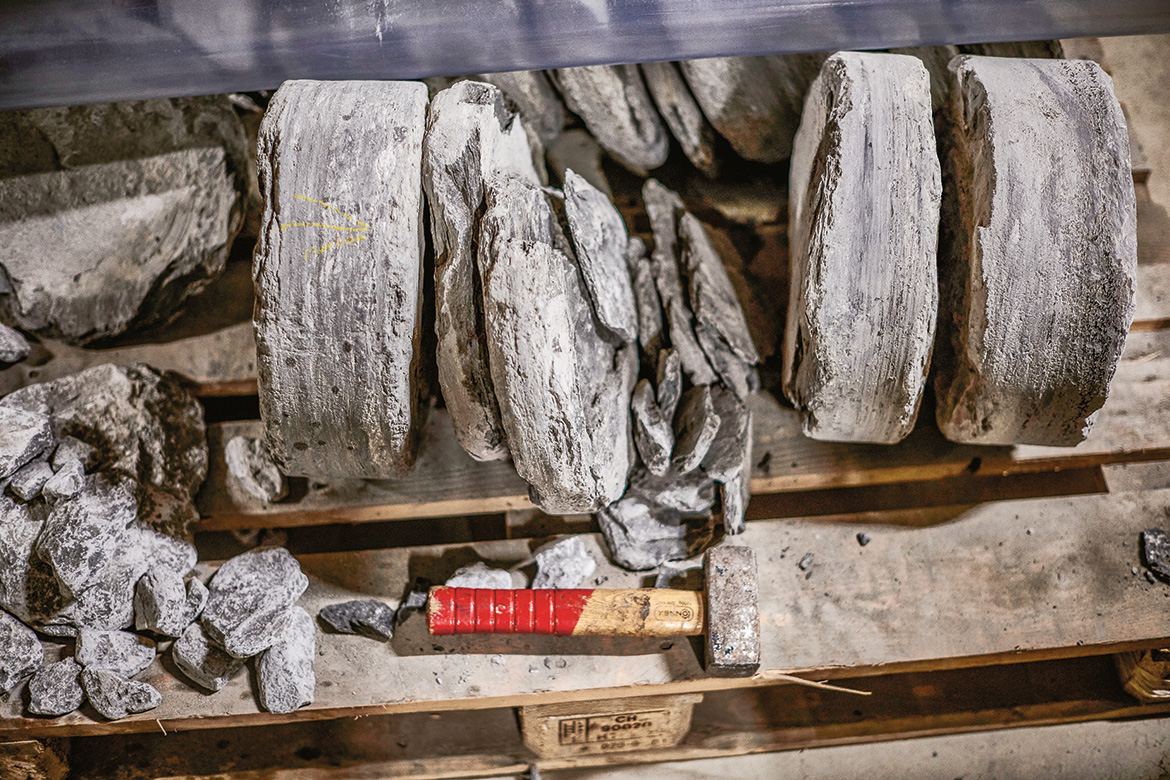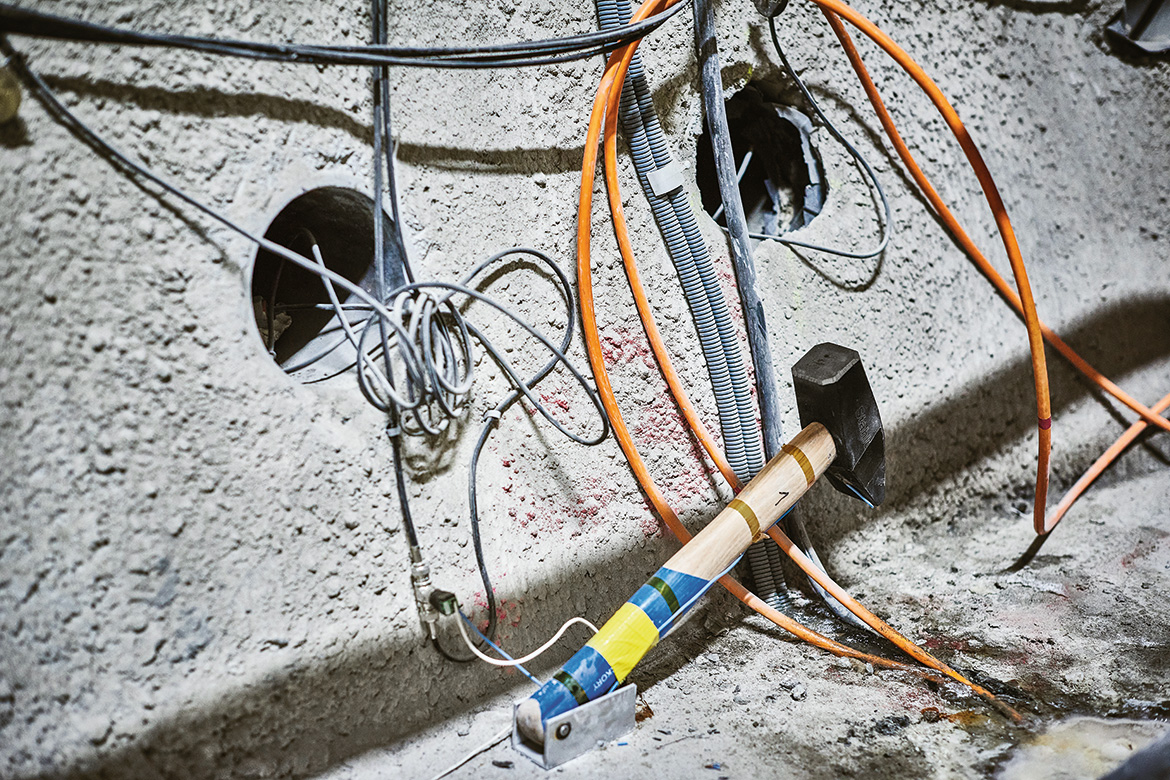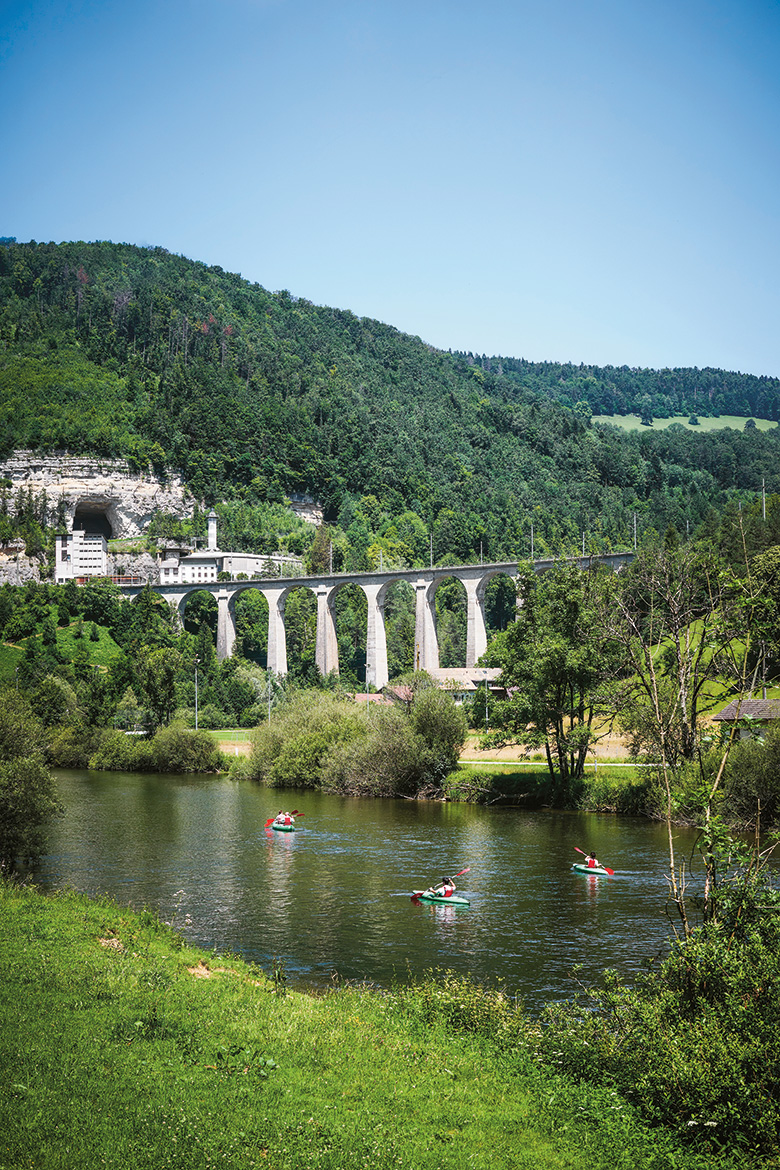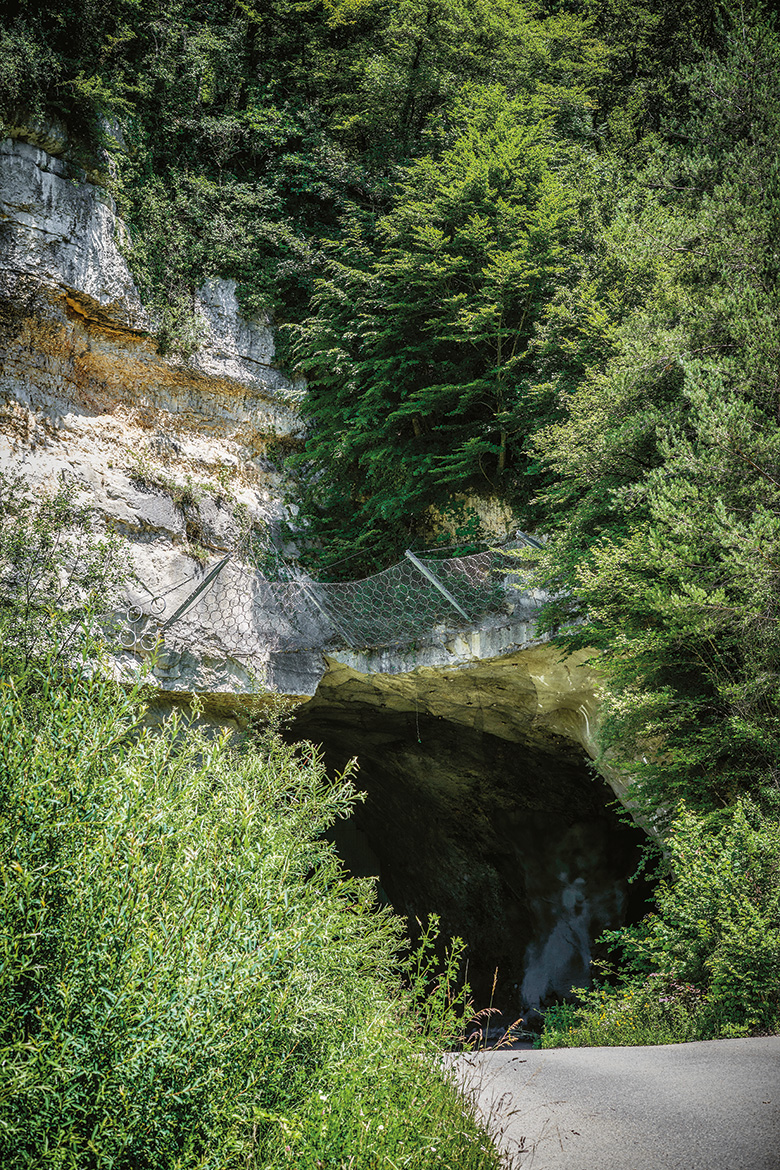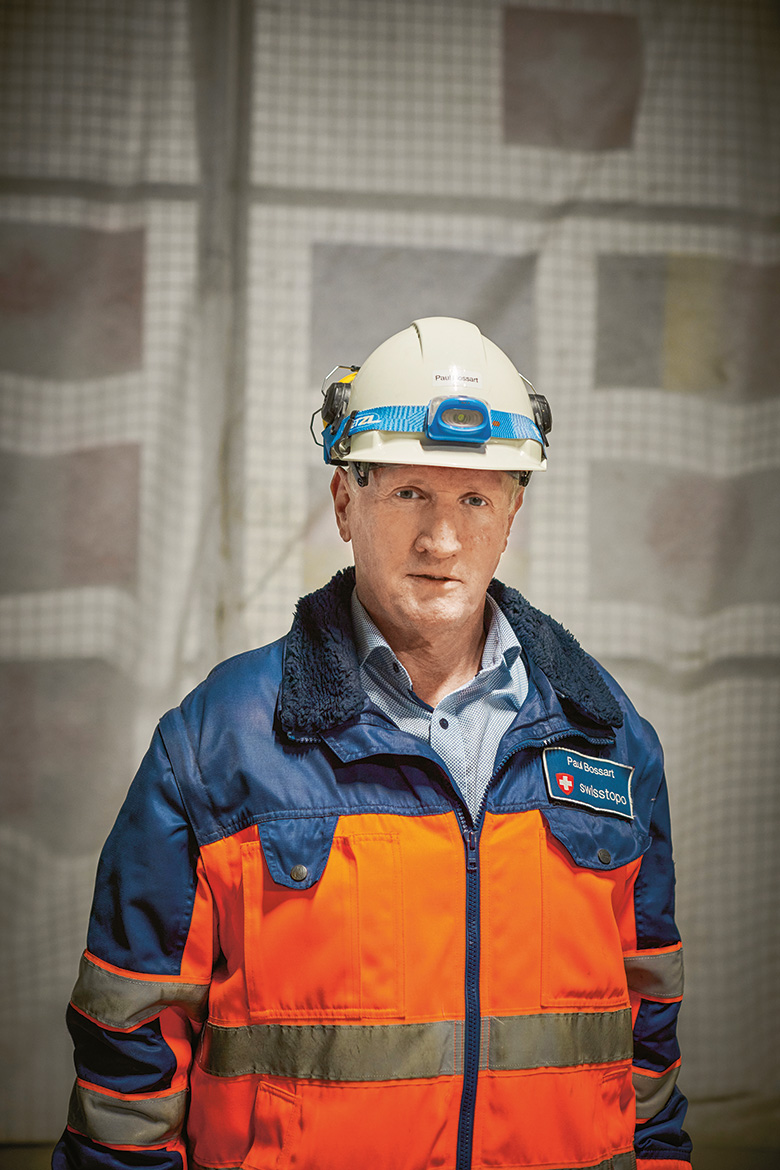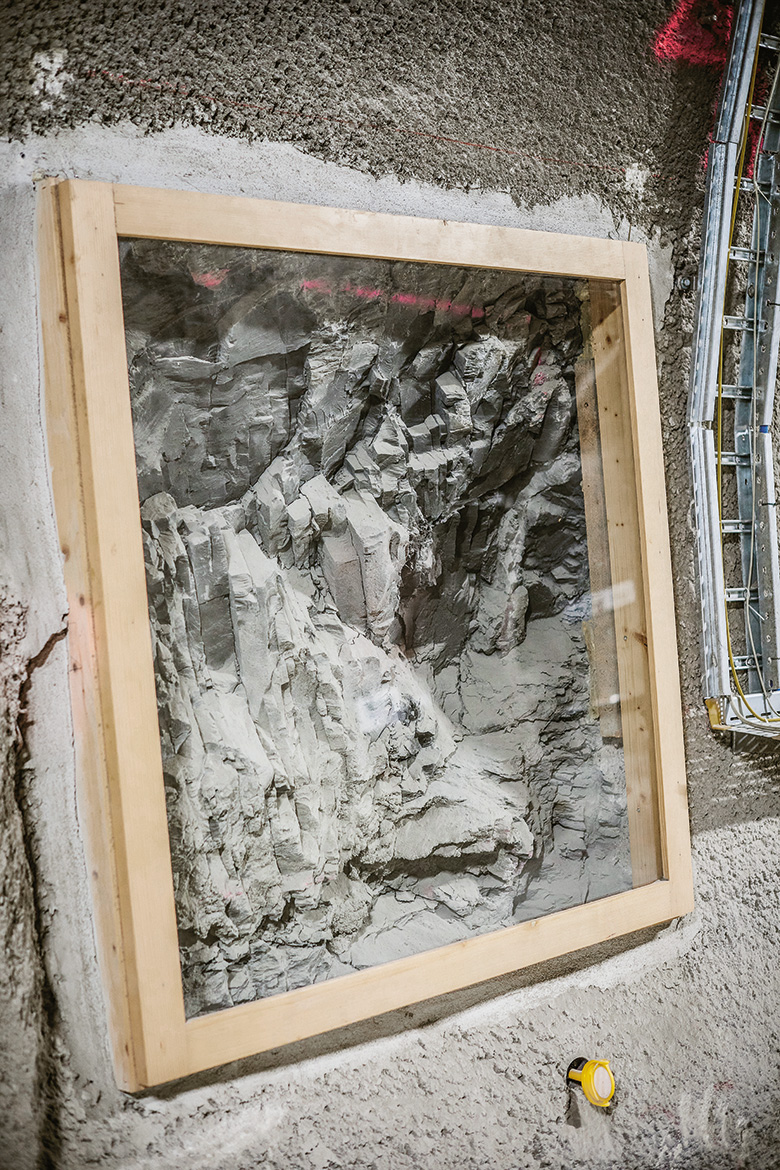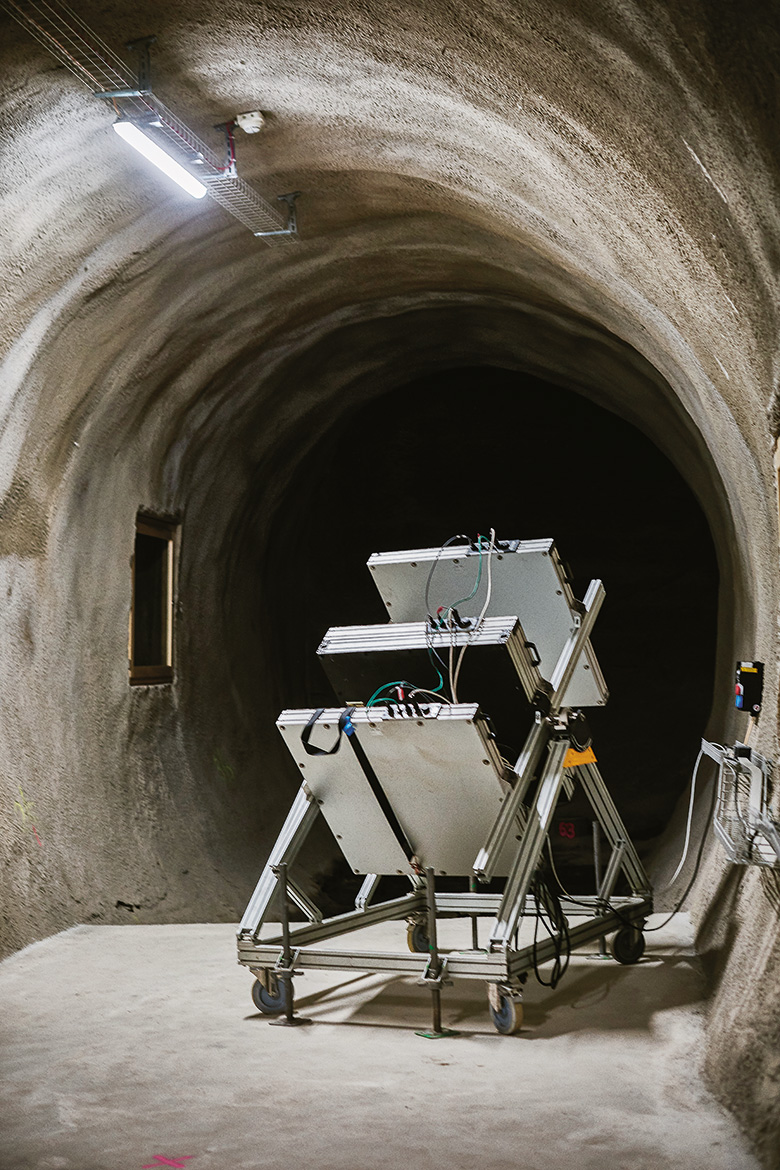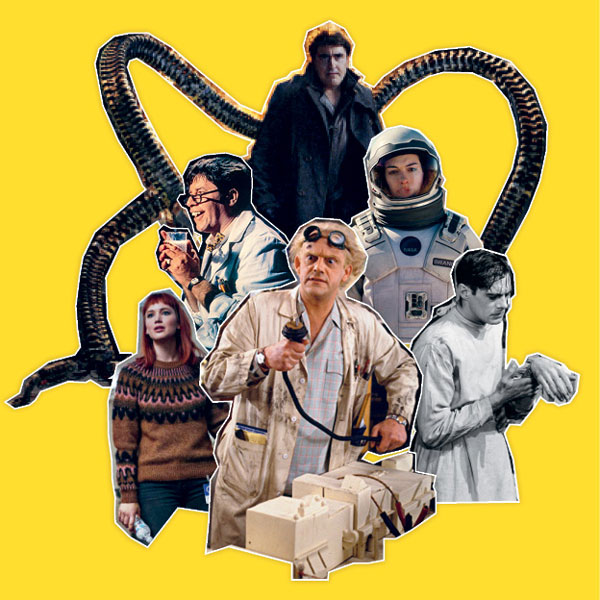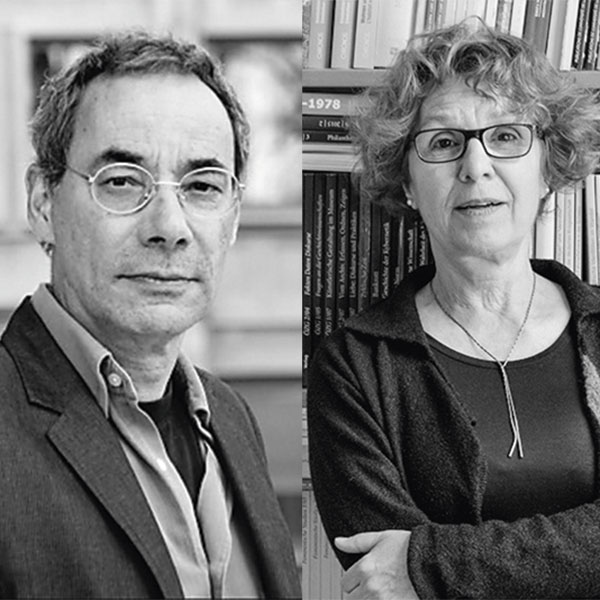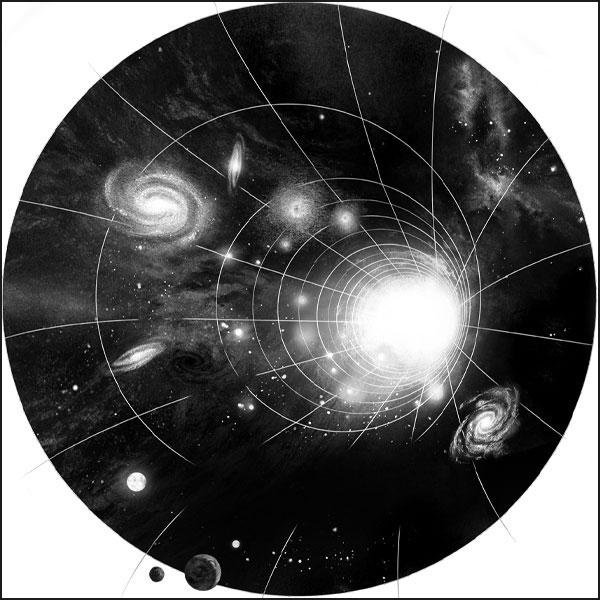Report
A rock tomb for nuclear waste and CO2
Where are we supposed to store radioactive waste? This is a question that occupies politicians and authorities all over the world. In a rock laboratory in the Jura, researchers are testing to see if opalinus clay is suitable for this purpose. But that’s not all: they’re also investigating whether we might store CO2 there too.

The opalinus clay is broken open to test whether it might be used for the permanent storage of radioactive waste. | Image: Christian Aeberhard
High above the sedate little town of St. Ursanne on the River Doubs in the canton of Jura, there is a large hole in the cliffs. It is the last visible sign of the lime factory that was in use here until 1993. A steep road leads up to the entry tunnel that takes us into the laboratory in the rocks. Some 200 metres into the tunnel, the road stops. Then a sliding door opens, our car drives into an airlock, and the door closes behind us. Now we’re trapped under many tons of rock. “The air pressure is higher inside the tunnel, so if there is a fire, the smoke won’t spread so quickly”, explains Paul Bossart, the director of the Mont Terri Laboratory. Shortly afterwards, a second door opens onto the airlock, letting you into a straight-as-a-die tunnel that’s four kilometres long. This is not just the entrance tunnel to the laboratory, but also the escape tunnel for the A16, which runs parallel to it. If there is an accident in the motorway tunnel, people will be evacuated through this one. In that case, the employees of the laboratory would have to leave too.
Aeons-old water
We proceed on foot, wearing helmets and kitted out with lamps. Tunnels and alcoves have been carved out of the rock here for another 1,200 metres. Work began in 1996, and the last, biggest gallery was completed in late 2019. There are some 30 rock laboratories in the world, of which four are located in clay like here in the canton of Jura. But only this Swiss laboratory is completely devoted to research. It is administered by the Federal Office of Topography (swisstopo). Twenty-two organisations from nine countries participate in it, including the Swiss Federal Nuclear Safety Inspectorate (ENSI), the National Cooperative for the Disposal of Radioactive Waste (Nagra) and their European counterparts, along with state geological services, universities and oil companies.
More than 1,000 scientists are involved in some 150 experiments here to investigate the characteristics of the opalinus clay. It is 174 million years old, is deposited all across the Jura range, and the water held in its tiny pores still contains seawater residues. Because this water has been retained for millions of years, researchers assume that the characteristics of this rock will barely alter in the next million years. This is why Nagra has proposed this region as a possible deep repository site for radioactive waste. The low degree of permeability of the opalinus clay also means it is a highly effective barrier. The rock laboratory focuses on two particular topics: the permanent disposal of radioactive waste, and storing CO2.
Hermann Gutgesell is a German drillmaster who has been working in this lab for the past 15 years. He’s just retrieved a drill core from the depths of the most recent shaft. “Here, you need to be precise and clean”, he explains. “It’s not like out in the open”. The rock sample is intended for the German Association for Reactor and Plant Safety (GRS). It will be analysed outside the lab to see how the rock reacts under pressure. The scientific findings from these tests will be placed at the disposal of all the partner organisations. “These technical notes have not been subject to quality control, but they can serve as a basis for further research”, says Bossart. The rock laboratory is part of a worldwide research network.
Carbon dioxide escapes too quickly
Now we’re going farther into the rock. “Right at the beginning, the lighting cut out and I lost my lamp. We had to proceed with just a cigarette lighter for illumination”, says Bossart. “That was when I noticed how quickly you can lose your sense of orientation”. Once a year, they carry out an emergency exercise in which the rescue services themselves also take part. Anyone working in the tunnels wears a badge that enables the emergency services to pinpoint their exact location. It’s also important to protect the experiments and their valuable instruments. This is why fire curtains are installed at regular intervals that isolate the individual sections of the tunnel. “Fire is a major risk. But up to now, luckily, there hasn’t been any serious incident”, says Bossart.
Many alcoves have been carved into the tunnel. Moisture has gathered in one of them. “That’s a clear indication that there is another rock layer here: lime marl”, explains Nussbaum. “It is more porous than opalinus clay”. This also means that this area would be unsuited for storing nuclear waste. This underlines the problem faced by the researchers trying to find a geological repository for it. “They have to be able to prove that any potential storage site has the opalinus clay with the same barrier properties that are found in the rock laboratory of Mont Terri”.
Sealed for evermore
An experiment is ongoing in another part of the rock laboratory to determine how opalinus clay reacts to radioactive substances. Since 2014, three steel containers have been stored in a self-contained side tunnel. The space between the canisters and the rockface has been filled with bentonite – clay granules with excellent sealing properties that also bind radioactive materials very well. “There is no radioactive waste here”, insists Bossart. “That would be too risky”. Instead, heating elements induce the temperature that would arise when radioactive waste decays. The primary aim of this experiment is to find out whether the steel canisters can remain sealed long enough for the radionuclides to decay sufficiently and be unproblematic if they happen to leak out. They are also investigating the consequences of heat accumulation in the rock.
A few months after storing the canisters, there is almost no oxygen left in this side tunnel. This is when so-called anaerobic corrosion begins through contact with the natural moisture in the rock. This is much slower than the rusting process that takes place through contact with air. “The first steel canisters will be completely corroded after several thousand years”, explains Bossart. Only then could the radionuclides escape from the radioactive waste. But most of them would remain in the bentonite and the opalinus clay. No more than a few would reach the biosphere, through groundwater. “But by then they will have decayed so much that they will no longer pose any danger to the environment”, he says. And as for the heat: the highest temperature endured by the opalinus clay during the history of the Earth was 90 degrees Celsius. “If it got any hotter, its retention properties might be reduced, which could mitigate its ability to seal any cracks”, says Bossart. This is why nuclear fuel rods would have to cool down in an intermediary storage facility for 40 years before being placed here.
Like a playground
Up to now, the rock has proven its usefulness as a storage facility. But Mont Terri will never become a permanent storage site. It is used solely for research purposes. “It’s like a playground”, says Nussbaum. “Here, we can learn things and make mistakes. Nagra can’t allow that in its geological storage sites”. When an experiment goes wrong, it’s not a failure, it’s a learning experience. Bossart mentions their ‘file with unexplained and unsolved questions’. There was one case that especially intrigued him. In one of the water samples that they had managed to wring out of the rock over the course of several years, the researchers found tritium, a hydrogen isotope that does not occur naturally in clay. “That simply couldn’t be”, says Bossart. “We worked out all the possible explanations, but they just didn’t fit”. They ultimately found their answer: the researcher who had taken the sample wore a tritium watch on his wrist. That had been sufficient to contaminate the sample.
We leave the laboratory after two hours. It’s a summer’s day, and the difference in temperature between inside and out is some 12 degrees Celsius. “Often, we only emerge from here when it’s dark”, says Bossart. “The work is so exciting that I never look at my watch”, adds Nussbaum. But as experience has shown, it’s better in any case not to wear one.

